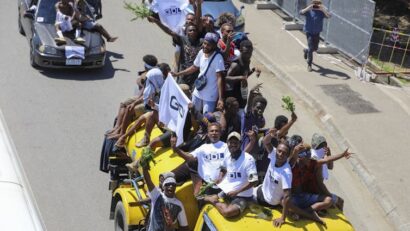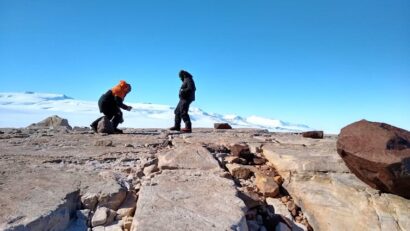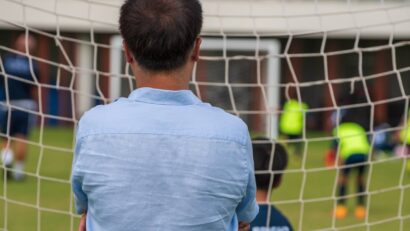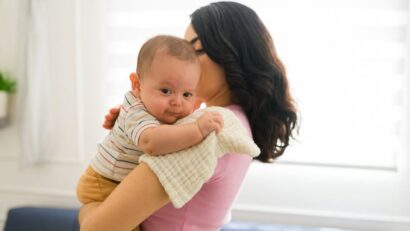
US student Gaza protests: five things that have been missed
Coverage of the recent student encampments at more than 50 universities across the United States has focused on confrontations between opposing groups of protesters or between protesters and police.
The spectacle of militarised officers being called on to campus grounds, or academics and students alike being pinned to the concrete, has dominated news broadcasts.
Having recently returned from the US, where I was conducting research at Columbia University’s library, I was able to witness these events at first hand. There are several features of the protests that haven’t received much attention, but are nevertheless worth exploring.
1. Religious celebration
While there have been instances of Islamophobia and antisemitism by some protesters and counter-protesters, the overwhelming majority of students protesting have been modelling the peaceful coexistence of religious expression. There has been a huge breadth of cultural celebration – including Latinx music and Punjabi and Dabke dancing. There have also been diverse religious services including by both Muslim and Jewish students, as well as liturgical readings by Union Theological Seminary speakers taking place within the encampments. These have been largely ignored by most media reports.
Students of different faiths – and none – facilitated each other’s rituals by holding blankets aloft as screens to form makeshift spaces of worship. Religious practices were also being modified, for example, as communities of Jewish students invited others to join them in celebrating the Passover Seder and adapted religious readings to satirise college administrators.
Seder Haggadah – Satire on the Four Children/Administrators.
Robert Jackson
Muslim students were also reclaiming the right to practice their faith publicly without fear. Students I spoke to viewed these acts as contributing to student safety, opposing the rise of Islamophobia and antisemitism in wider society. This provides a counterpoint to the frequent accusations of “anti-Jewish hatred” levelled against them.
2. Diversity
Earlier this academic year Columbia University suspended the student chapters of Students for Justice in Palestine and Jewish Voice for Peace. This action, along with complaints that “university disciplinary processes” were being used “to target Palestinian students and their allies on and off campus”, appears to have catalysed a wider alliance of dissent.
Thus, the Columbia encampment was organised by a “Divest” coalition of 116 groups that had far greater reach than the two suspended groups.
Columbia University Apartheid Divest Logo.
CUAD Website
A recent referendum by Columbia College Student Council on divestment from Israel passed with 77% in favour on a 40% turnout. This was a significant increase from comparable earlier votes.
3. Stress-testing university ethics
The protesters are conscious that, particularly since the rise of the #BlackLivesMatter movement and decolonising initiatives, institutions have sought to signal their values. An example of this is New York University recognising that the city of New York was built through the violent displacement of the Lenape people from their homeland.
The students involved in these protests feel that the values expressed in such statements don’t match the policies and investments that are being pursued by their administrations. Nor do they believe the treatment that they are receiving reflects those ethics.
This treatment has included being arrested by police, who have been invited onto campus for the first time since 1968. There have also been threats of suspension and evictions from university accommodation, for engaging in peaceful protest that questions institutional conduct.
New York City police officers entering Hamilton Hall at Columbia University where students had barricaded themselves in, April 30 2024.
EPA-EFE/Stephani Spindel
Members of the Columbia chapter of the American Association of University Professors have raised their concerns about the “administration’s blatant lack of respect for the safety of its students and the principles of higher education”. The actions of students at Columbia have placed on the public agenda a critical examination of the ethical legacy of their institution.
Minouche Shafik, President of Columbia University, acknowledges that “there is much debate about whether or not we should use the police on campus”, but states that the university has been “patient in tolerating unauthorized demonstrations”, and pursued a “collaborative resolution with the protesters”.
4. The protests are also about gentrification
The current protests are indisputably centred on Palestine. Students have been calling for transparency and accountability over their universities’ financial connections with Israel. But the student activists describe their campaigns as concerned equally with local issues as with global politics.
They link their discussions of displacement and occupation in relation to Gaza directly to gentrification conflicts, for example, between Columbia University and neighbouring (predominantly Black and Latinx) communities in Harlem. Students believe that Columbia’s expansion project is undermining low-income residents by acquiring property to connect its Morningside campus with the Columbia University Medical Centre.
This is a point of similarity with the 1968 Columbia protests. While those events are often framed primarily in relation to the movement against the Vietnam War, gentrification was also a significant trigger for campus occupations.
At that time, Columbia University proposed to build a gymnasium by developing land in nearby Morningside Park. Plans for a separate lower-level community entrance, seen by many as an attempt at segregation quite literally through the back door – circumventing the 1964 Civil Rights Act – provoked further opposition. The project was eventually shelved.
Placards at Columbia University Encampment.
Robert Jackson
5. Visibility as a battleground
Students camped on Columbia’s lawns chose initially not to occupy buildings as their 1968 counterparts had. This made their activities more visible to the world. It made the protests more accessible to allies and opponents alike. But it also enabled surveillance by university and government authorities.
This visibility raises the potential stakes for each person involved in the protests. It arguably involves a greater level of commitment and immediate risk than in 1968.
The encampments at Columbia and other Ivy League universities have received disproportionate attention from the world’s media, especially when measured against protests at less wealthy or prestigious institutions. The students at Columbia have tried to use this visibility as a mirror to persuade others of the conspicuous absence of Palestinian lives in public discourse, and the necessity of centring Palestinian voices.
‘American spring’
Behind the wave of student encampments is a constituency disillusioned with a lack of effective measures from the “international community” to achieve a ceasefire and an end to the conditions of famine in Gaza.
While the protests are student-led, there has been legal support from faculty academics as well as media interventions. Meanwhile there has also been an increasingly organised presence of academics during police interventions on campus.
There is a generational difference in outlook about the likely outcome of these protests. In conversation, staff tend to be more reserved about their expectations. By contrast, students exude a sense that the process is building towards a breakthrough moment. Their confidence in the possibility of realising their demands is reflected in the recurrent chant: “I believe that we will win.”
It is a marker of the dramatic reversal of conventional political assumptions about students in the US represented by these protests that some in Gaza have begun referring to them as the “American spring”. Läs mer…








